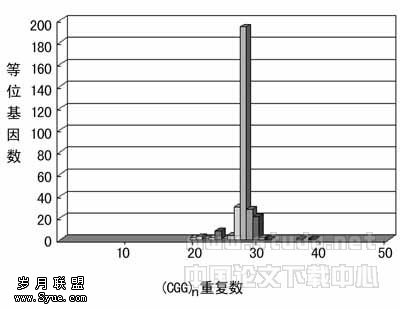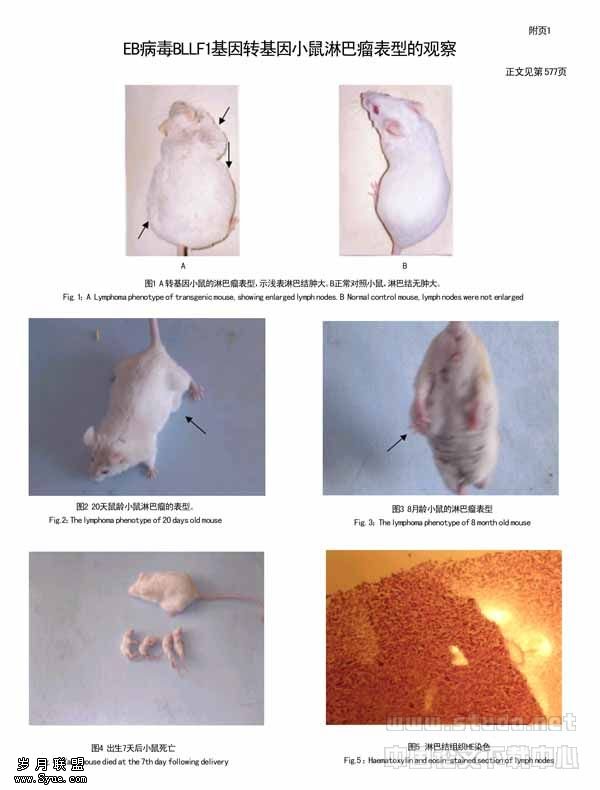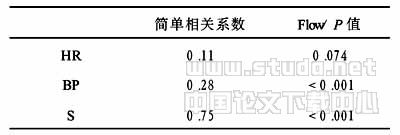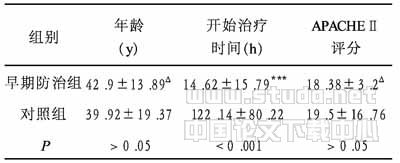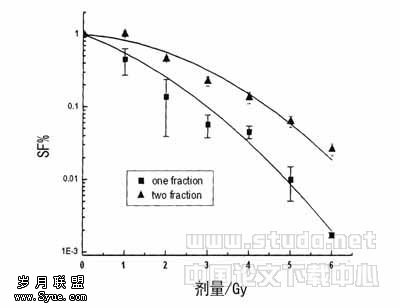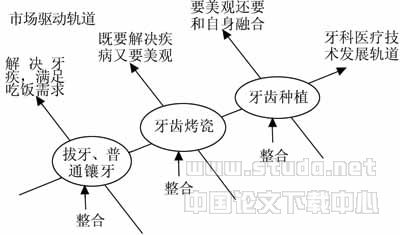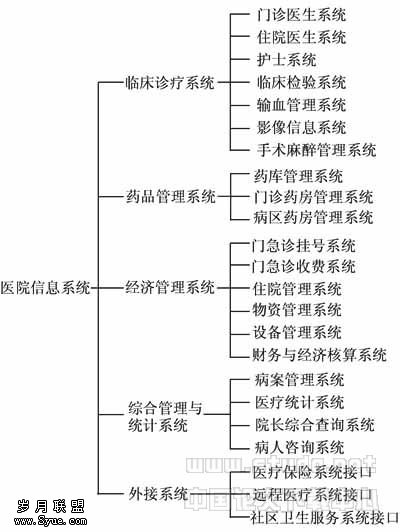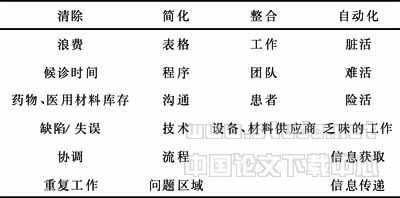裸鼠前列腺原位肿瘤模型的建立
作者:罗勇,张林琳,贺大林,李翔,宁亮,侯惠莲
【关键词】 ,前列腺癌
Establishment of prostate cancer model by orthotopic injection of human prostate cancer cell line Du145
【Abstract】 AIM: To establish a prostate cancer orthotopic injection model in nude mice and to discuss its value of application. METHODS: Lower abdominal incision was made in 10 male nude mice. After the bladder and prostate were exposed, Du145(6×106)was injected in ventral prostate lobes under the prostatic capsule by a TB syringe with a 29gauge needle at 50 μL per mouse. The abdominal wall and skin were then closed with 70 surgical suture and the vital signs of the nude mice were observed. When the mice were dying, they were sacrificed. After the mouse was killed, the tissues of prostate, bladder, lymphatic node, lung and liver were taken out, fixed in 40 g/L formaldehyde, embedded in paraffin, stained by HE and then observed microscopically. The bone metastasis was observed by Xray. RESULTS: The incidence of primary tumor after intraprostatic injection was 60%(6 of 10). About 14 d later, there were small palpable nodes in prostate and about 19 d later, cachexia occurred in nude mice. After dissection, it was shown that the diameter of primary tumors varied from 0.8 cm to 1.5 cm and the envelope of the liver became crimpy. Acute hepatitis could be observed under microscopy, which represented a large scale of hepatocyte death, liver sinus dilatation and hyperemia, hepatic lobule infiltrated by lymphocyte and macrophage and inconspicuous hyperplasia. CONCLUSION: The orthotopic injection model is an optimal animal model to study the occurrence and development of prostate cancer. It mimics the natural situation of human prostate cancer and will help to understand the mechanisms of androgenindependence and osseous metastasis and tumorhost determinants of prostate specific antigen (PSA) expression.
【Keywords】 prostate neoplasms; orthotopic injection; metastasis; nude mice
【摘要】 目的: 建立一种裸鼠前列腺癌原位模型. 方法: 在10只裸鼠下腹部切口,显露膀胱和前列腺,用1 mL TB针筒、29G针头在其前列腺左右腹侧叶包膜下接种人前列腺癌DU145细胞50 μL,共计6×106个,以建立原位肿瘤模型,观察裸小鼠生命体征变化. 于濒死状态下处死,并取原位肿瘤、膀胱、盆腔淋巴结、肺脏和肝脏标本,用40 g/L甲醛固定、石蜡包埋和HE染色后显微镜下观察,X线照射显示骨骼转移情况. 结果: 10只裸鼠中有6只模型建立成功. 接种后14 d左右,可触及前列腺部位有黄豆大小的包块,质硬. 19 d后出现恶液质,解剖后发现前列腺部位有包块生长,直径约在0.8~1.5 cm,其中2例侵及膀胱. 肝脏泛黄、被膜皱缩,镜下呈急性重型肝炎的病理改变. 结论: 小鼠前列腺原位移植瘤模型建立成功.
【关键词】 前列腺癌;原位注射;转移;裸鼠
0引言
前列腺癌初诊时大约30%~50%的患者已发生转移[1],而目前针对前列腺癌侵袭和转移的机制及有效的措施研究较少,一个重要原因是缺乏合适的动物模型. 为了建立一种更接近于人类肿瘤体内生长过程的前列腺癌动物模型,我们通过原位注射人前列腺癌细胞Du145技术建立起BALB/c裸鼠的前列腺癌原位种植瘤模型如下.
1材料和方法
1.1材料
雄性BALB/c裸鼠10只,6 wk龄,体质量20 g左右,由第四军医大学实验动物中心提供. 均在SPF条件下层流架内饲料饮水自由摄入. Du145细胞系由美国Chung LW惠赠. 用含100 mL/L胎牛血清(杭州四季青公司)的RPMI 1640培养液(美国Gibco公司)在37℃,50 mL/L CO2的孵箱内培养,以1.25 g/L胰酶和0.2 g/L EDTA的混合液消化传代.
1.2方法
裸鼠用10 g/L戊巴比妥钠(75 mg/kg)麻醉,仰卧位,胶带固定四肢,下腹部正中横切口1 cm,暴露膀胱和精囊腺,用棉签轻压膀胱顶壁、腹侧壁,并向下游离至膀胱颈,推开肌肉及生殖腺进一步暴露前列腺,可见其大小约1.0 mm×1.5 mm×2.0 mm,分左右2叶,呈粉红色,有明显的腺体组织特征. 用1 mL TB针筒、29G针头轻轻挑起一侧前列腺包膜,缓慢进针,直至顶起对侧包膜,明确针尖进入包膜后,再缓慢推注Du145细胞悬液50 μL(6×106个),以包膜向上鼓起,脱离腺体表面为满意标准. 恢复脏器的解剖位置,用70可吸收线分别间断缝合腹壁肌肉层和皮肤层,待鼠苏醒后回笼. 以裸鼠出现恶液质、处于濒死状态作为观察终点,颈椎脱臼法处死. 尸解并观察荷瘤部位肿瘤的生长情况. 裸鼠处死后,立即在100 mA,40 kV,5.23 ms条件下行X线检查. 裸鼠与球管距离为1.0 m;然后取前列腺、膀胱、盆腔淋巴结、肝脏和肺脏标本,40 g/L甲醛固定、石蜡薄层切片4 μm,HE染色后光镜下观察有无转移灶.
2结果
2.1肿瘤模型的建立裸鼠注射后14 d可于下腹前列腺部触及结节,黄豆大小、表面光滑、质硬、活动度差. 19 d出现恶液质,解剖后发现6只裸鼠前列腺部位有包块形成,直径0.8~1.5 cm. 病理证实原位移植瘤模型建立成功.
2.2侵袭和转移前列腺部位包块呈结节状、质硬,与周围精囊腺、输精管、膀胱及肠管黏连. 肝脏有明显的肉眼病变,体积缩小、颜色泛黄、表面被膜皱缩、遍布黄色斑点状病变. 2只裸鼠前列腺原位肿瘤侵及膀胱(Fig 1),病理检查未见肝、肺、盆腔淋巴结肿瘤转移灶;X线也未发现骨骼病变.
2.3HE染色结果前列腺组织内有成群密集的未分化上皮细胞,细胞排列紊乱,有丰富的、泡沫样的嗜酸细胞象,异形性明显,核大深染,核内有多形的、数目不均的染色质(Fig 2),有巨核细胞,间质成分少,瘤体中间无坏死,仅见极少腺样结构;肝脏呈急性重型肝炎表现,镜下可见:肝细胞弥漫性的大片坏死,以小叶中央最为明显,肝窦扩张充血,小叶内有淋巴细胞和巨噬细胞为主的炎性细胞浸润,小叶增生不明显.
3讨论
人前列腺癌动物模型是研究前列腺癌发病机制、肿瘤与宿主关系、癌肿侵袭与转移过程和治疗措施有效性不可缺少的理想实验工具,因此,建立理想的前列腺癌动物模型应能最大程度地模拟人类前列腺癌的发生过程并具备以下特点[2]:①人源性肿瘤,可分泌前列腺特异性抗原(PSA);②肿瘤特性与人类前列腺癌相似;③对激素的治疗反应与人前列腺癌相似.
裸鼠因其免疫缺陷特性成为建立人类肿瘤动物模型的最佳载体. 以往制作前列腺癌裸鼠模型时多选择皮下作为荷瘤部位,接种方便、易于观察,但是根据Paget[3]的“种子与土壤”(Seed and Soil)学说,肿瘤的生长和转移依赖于一个合适的微环境,因此原位种植较皮下接种具有更高的致瘤率和转移机率,且皮下移植瘤模型并不能很好地模拟前列腺癌在人体内的生长过程以及许多生物学行为,而原位种植不仅使肿瘤细胞获得了更接近人体内的生长微环境,而且其中丰富的内源性生长因子,能够提高移植成功率,并形成与临床相似的转移模式. Sato等[4]对比前列腺癌LNCaP细胞悬液分别作SCID鼠皮下和原位种植后的情况,结果皮下组中100%成瘤,无一发生淋巴结及远处转移;原位组中89%成瘤,但全部发生腹膜后和纵隔淋巴结转移,40%发现有镜下肺转移. Rembrink等[5]和Wang等[6]用前列腺癌PC3,PC31251L,TSUPr1和LNCaP细胞作裸鼠的原位种植模型,致瘤率高,淋巴结、肺部转移率极高. 由于裸鼠前列腺非常小(约50 mg),因此进行肿瘤细胞注射需要特别精细的操作. 而且,注入肿瘤细胞后10~180 min,即使没有直接刺入血管,也容易产生自发的淋巴道和血道转移而造成人为的播散. 我们进行了多次预试验,最终达到了包膜向上鼓起,脱离腺体表面的要求[5],最终成瘤率为60%,与国内王鹏飞等[7]的结果相似. 我们还观察到,所有小鼠术后均发生急性重症肝炎,其性质可能是一种自身免疫性急性重症肝炎(AIH). 目前AIH的发病机制尚不清楚,但有研究表明药物、环境和病毒感染可能是AIH的促发因素. 由于小鼠过早出现肝衰竭,因此本组模型中未能观察到肺转移、淋巴结转移和骨转移.
另外,种植组织学完整的瘤块比肿瘤细胞悬液的成瘤率和转移率更高[8],但对显微器械和操作精细程度的要求更高. 因此,原位注射肿瘤细胞逐渐成为当前的主流技术. 此外,成熟的建模技术有助于“培育”出生物学特性更接近临床实际的新细胞株. 例如,绝大多数前列腺癌细胞株不能分泌PSA,不利于肿瘤模型的监测,LNCaP虽能分泌PSA,却属于一种雄激素依赖型细胞株,限制了它在雄激素非依赖型前列腺癌中的研究应用. Thalmann 等[9,10]利用LNCaP建立不同的免疫缺陷动物模型,培育了一系列亚细胞系,既保留了PSA的分泌特性,又对雄激素非依赖,恶性度更高. 利用这些亚细胞系在裸鼠身上分别皮下和前列腺原位接种,均建立了较LNCaP细胞更具致瘤能力和骨转移潜能的动物模型. Harper等[11] 利用TEN12在不同条件下造模后,也成功地培育了两种新的细胞亚系TEN12F和TEN12C,为在分子水平解释人前列腺癌从雄激素依赖型向非依赖型转变的机制创造了条件.
【】
[1] Stamey TA, Mc Neal JE. Adenocarcinoma of the prostate [A]. In: Walsh PC, Reik AB, Stamey TA, et al. Campbells urology [M]. 6th ed. Philadelphia: WB. Saunders Company, 1992: 1185.
[2] Bastide C, Bagnis C, Mannon P, et al. A Nod Scid Mouse model to study human prostate cancer [J]. Prostate Cancer Prostatic Dis, 2002;5: 311-315.
[3] Paget S. The distribution of secondary growths in cancer of the breast [J]. Cancer Metastasis Rev, 1989;8:98-101.
[4] Sato N, Gleave ME, Bruchovsky N, et al. A metastasis and androgensensitive human prostate cancer model using intraprostatic inoculation of LNCaP cells in SCID mice [J]. Cancer Res, 1997;57: 1584-1589.
[5] Rembrink K, Romijn JC, Van der kwast TH, et al. Orthotopic implantation of human prostate cancer cell lines: A clinically relevant animal model for metastatic prostate cancer [J]. Prostate, 1997;31: 168-174.
[6] Wang XE, An ZL, Geller J, et al. Highmalignancy orthotopic nude mouse model of human prostate cancer LNCaP [J]. Prostate, 1999;39: 182-186.
[7] 王鹏飞, 师长宏, 邵晨, 等. 利用裸鼠建立人前列腺肿瘤原位移植模型[J]. 中华实验外科杂志, 2002; 19(3): 230-231.
Wang PF, Shi CH, Shao C, et al. Establishment of urogenital infinite tumor cell lines by nude mice tumor xenotransplantation[J]. Acta Lab Anim Sci Sin, 2002; 19(3): 230-231.
[8] Hoffman RM. Orthotopic metastatic mouse models for anticancer drug discovery and evaluation: A bridge to the clinic [J]. Invest New Drug, 1999;17: 343-359.
[9] Thalmann GN, Anezinis PE, Chang SM, et al. Androgenindependent cacer progression and bone metastasis in the LNCaP model of human prostate cancer [J]. Cancer Res, 1994; 54: 2577-2581.
[10] Thalmann GN, Sikes RA, Wu TT, et al. LNCaP progression model of human prostate cancer: Androgenindependence and osseous metastasis [J]. Prostate, 2000; 44: 91-103.
[11] Harper ME, Goddard L, Smith C, et al. Characterization of a transplantable hormoneresponsive human prostatic cancer xenograft TEN12 and its androgenresistant sublines [J]. Prostate, 2004; 58: 13-22.


